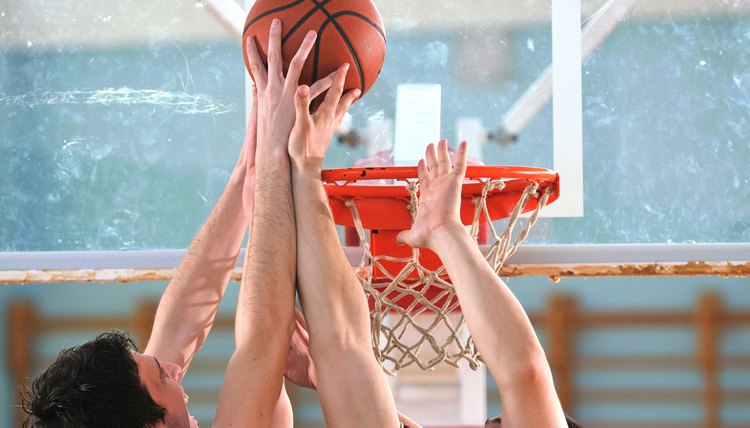How to Keep a Basketball Scorebook

Basketball scorebooks allow you to keep a complete record of a game. Utilize them to keep statistics for your team, monitor game information for the coaching staff or serve the official scorer. Track field goals, free throws, personal fouls, technical fouls, timeouts and alternating possessions for held balls in these books.
Filling Out The Roster
Start by putting in correct team information. List the players in numerical order, from the smallest number to the largest. Designate the starters by checking the appropriate box, if your scorebook has one. Make sure the information is listed accurately. Teams that give the official scorer an incorrect roster -- or fill out the official scorebook incorrectly -- can be penalized with technical free throws.
Recording Fouls
Be very sure of foul calls before recording them. If you are an official scorer or you're keeping the book on behalf of the coaching staff, ask officials for a clarification if you are not sure. The official NCAA Scorebook features the numbers 1 2 3 4 5 to the left of the player's name and a box under each numbers. Draw a line through the 1 for the first foul, a line through the 2 for the second foul and so forth. Write the time of each foul under the number, if there is space for it. Chronicle team fouls one by one in the designated area, using the number of the player charged to denote the foul. If you are keeping the book on behalf of the coaching staff, your record-keeping will be vital if there is dispute on foul totals at some point in the game.
Recording Technical Fouls
Learn the technical foul rules at your level of competition; in some cases a technical foul also counts as a personal foul. Record technical fouls in a separate area with a notation on the time, the type of technical foul and which individual received it -- unless it was a bench technical on no one person.
Tracking Time Outs
Tracking timeouts is another critical function if you're keeping the scorebook for a team. Keep a count in the space allotted and add the time of the stoppage under the notation if you can. Differentiate between a regular timeout and a 20-second timeout, if there are such things at your level.
Documenting Individual Scoring
For regular field goals, put down a 2 in the player's column for that quarter or half. For 3-point field goals, put down a 3. For a free throw attempt, put down a 0. For a made free throw attempt, put a X inside that 0. For two-shot fouls, connect the 0s with a small "v" underneath them. For one-and-one foul calls, connect the 0s with an inverted "v" on top. If a player misses the front end of the one-and-one, you would put down a 0, attach the inverted "v" on top and leave the second spot blank -- because the player did not get the second shot.
Providing Team Totals
For the team totals, add up the number of regular field goals in each quarter or half and put down that number with (2) next to it in the total box. Add up the 3-point field goals and put (3) next to that number in the total box. In the free throw column, add up the makes and misses and put those numbers in the total box. Then add up the game totals in the total boxes underneath the individual player summaries.
Recording Running Score
Keep a running score if your scorebook has an easy format for that. In the Official NCAA Scorebook, there are numbers 1 through 136 displayed for this purpose. If player makes a basket to give his team 16 points for the game, draw a line through the 16 and put the player's number under that. Record the time of the basket as well, if you want that much detail.
Other Statistics
Although the Official NCAA Scorebook doesn't include columns for missed field goals, assists, rebounds, blocked shots and steals, you can keep those statistics too. One simple way to track missed shots is to put down a 1, 2 or 3 for each free throw, field goal and three-point shot taken. Then circle the shots that are made.
References
Writer Bio
Jeff Gordon has been reporting and writing since 1977. His most recent work has appeared on websites such as eHow, GolfLink, Ask Men, Open Sports, Fox Sports and MSN. He has previously written for publications such as "The Sporting News" and "The Hockey News." He graduated from the University of Missouri-Columbia School of Journalism in 1979 with a bachelor's degree.
